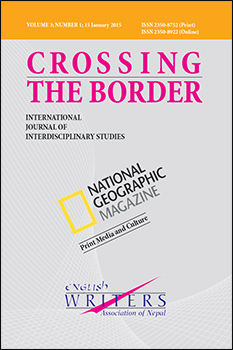Arsenic Contamination in the Deep and Shallow Groundwater of Bara District, Nepal
DOI:
https://doi.org/10.3126/ctbijis.v3i1.14091Keywords:
Groundwater, drinking water, arsenic, permissible valuesAbstract
Groundwater is the main source of drinking water in the Tarai region of Nepal. Communities depend on drinking water of dug wells and tube wells. Altogether thirty six groundwater samples were randomly collected from dug wells and tube wells of Bara District, during pre-monsoon in 2012. The depths of the wells, ranged from 10 to 70 m. Atomic Absorption Spectrometer (AAS), were used to measure the concentration of arsenic. About 50% of tube wells exceeded permissible values of WHO guideline (10 ppb), but 12.5 % tube wells exceeded permissible values of Nepal interim standard of arsenic (50 ppb). The risk of arsenic is high because the contaminated water has been continuously used for cooking, drinking and other purposes. This alarming situation therefore calls for measures to mitigate the problem.
Crossing the Border: International Journal of Interdisciplinary Studies
Vol.3(1) 2015: 65-70

